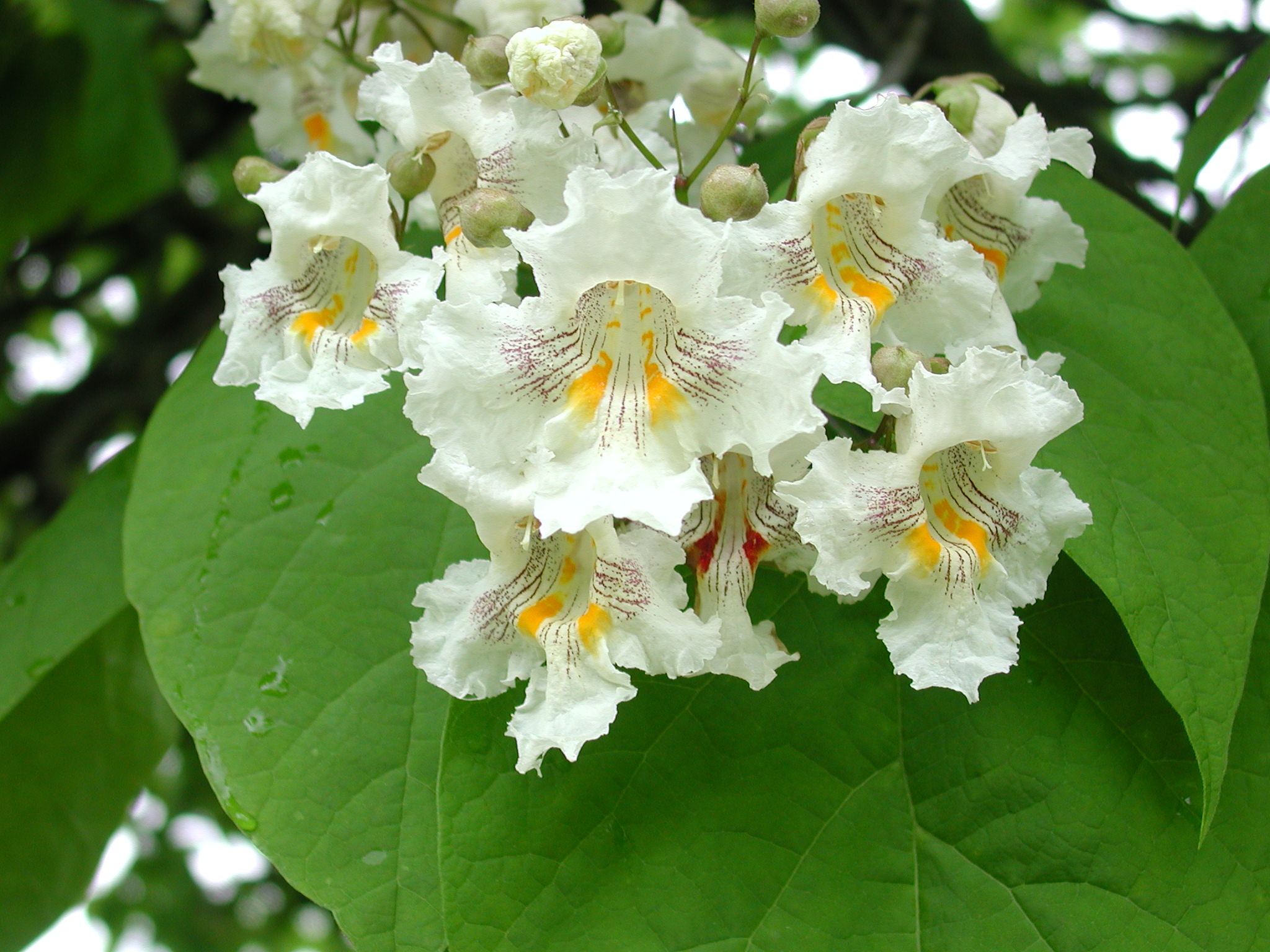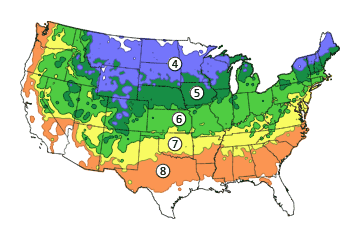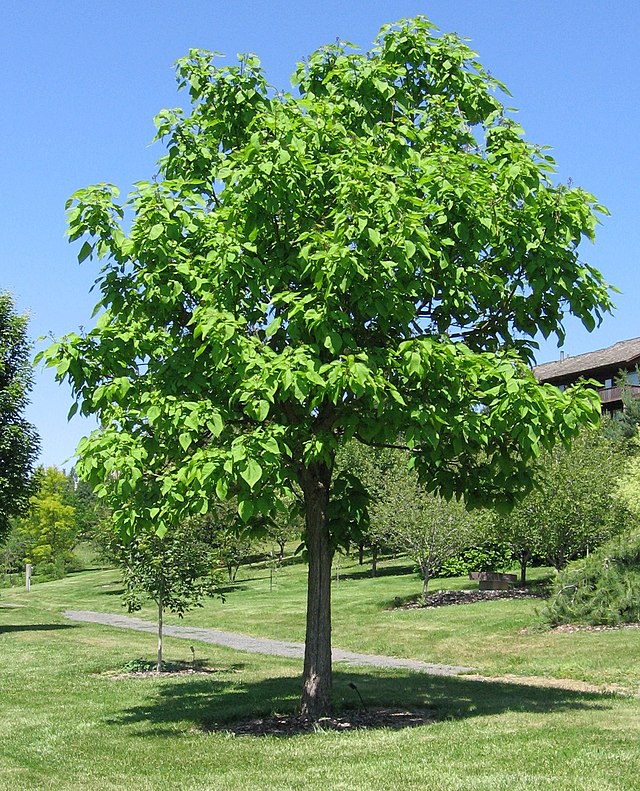northern catalpa tree range
The catalpa tree is found in forests from southern Illinois and Indiana to western Tennessee and Arkansas. Natural range of Catalpa speciosa.

Catalpa Northern Nebraska Forest Service
Click on the carousel image to display a larger version if available.

. The natural range for Northern Catalpa includes western Tennessee and other parts of the Central Mississippi Valley. Free Shipping on Qualified Orders. Northern catalpa is a medium to large deciduous tree native to the United States that survives in USDA Hardiness zones of 4-8.
The fruit is a long pod that can be a litter problem. They prefer full sun or part shade and are tolerant of most soil conditions though it prefers a moist loam with plenty of organic material. Growth is rapid at first but slows down with age.
Each donation receives a personalized card or certificate sent to you or the family. Northern catalpa - Catalpa speciosa Native Range Border. Upper surface dark green smooth.
Mildly scented when crushed. On young tree seedlings the bark is thin and easily damaged by impact or rodent. It was native to a narrow zone in western Tennessee through southern Indiana and Illinois to parts of Arkansas and Missouri but its current range is larger due to planting by humans.
Bark is thick with. 12 rows Northern Catalpa Care. 12 rows Also known as southern catalpa hardy catalpa western catalpa northern catalpa catawba.
Northern Catalpa Catalpa speciosa Our Favorite Trees for Waukesha. The white tubular and frilly-edged flowers have lower petals with yellow and purple spots. The researchers documented about 30 trees along a mile stretch near Eisenhower Recreation Center.
Northern and southern catalpas are very similar in appearance but the northern species has slightly larger. It has been widely planted in urban areas as an ornamental and shade tree. This means that northern catalpa can survive throughout most of the chillier Midwestern states.
The leaves are cordate and the flowers are white. The original range of northern catalpa did not extend to northern Indiana. It is native to southern and southeastern Illinois while in other areas of the state it has escaped from cultivation see Distribution Map.
Northern Catalpas native range is a small band along the Ohio and Mississippi rivers between Illinois Indiana West Virginia Missouri Tennessee and Arkansas. The tree bark ranges from scaly to ridged to blocky plates. Why We Love It.
The Latin specific epithet speciosa means showy. Catalpa speciosa - Northern catalpa Range Map. Northern catalpa is a large upright to rounded tree reaching 50 feet high and 35 feet wide.
Full Sun to Part Shade. Ad Compare Prices Read Reviews. Huge dinner-plate sized leaves with gorgeous white flowers in spring.
Northern catalpa is a medium-sized tree with a short trunk and several large ascending branches and a narrow rounded crown. Northern catalpa is best known as a large deciduous tree bearing showy spring flowers. Catalpa speciosa ka-tall-pa spee-see-o-sa Family.
Catalpa speciosa Map. Warder Warder ex Engelm. The flowers of catalpa are perfect.
Very large heart-shaped 6-12 inches long. Positive attributes of catalpa include its drought tolerance soil adaptability fast growth rate attractive flowers and distinctive long seed pods. Each flower sports a unique line of spots about 2 inches in diameter.
The flowers upright stalks range from 4 to 8 inches in length. The Tree is a deciduous tree it will be up to 20 m 66 ft high. This short-lived coarse-textured tree tolerates a wide range of growing conditions.
Bignoniaceae Trumpet Creeper Key Steps 1d Leaves whorled 3 or more attached at same node around the stem Northern Catalpa Description Leaf. Catalpa speciosa commonly known as the northern catalpa hardy catalpa western catalpa cigar tree catawba-tree or bois chavanon is a species of Catalpa native to the midwestern United States. The Northern Catalpa is botanically called Catalpa speciosa.
These are white with yellow and purple markings. Northern Catalpa Catalpa speciosa Catalpa speciosa commonly referred to as northern catalpa or simply catalpa. Growth Rate This tree grows at a medium to fast rate with height.
Click here for the original image. 20 to 50 ft. Three sometimes two leaves attached at the same point on the stem.
They grow in a whorled or opposite arrangement along branches. Leaves are simple opposite or in threes egg-shaped with an abruptly pointed tip 612 inches long margin mostly smooth. Its bark is a gray-brown that becomes scaly with age.
Native to the mid-west. Originally this tree was native to a small region of the mid-Mississippi valley. 40 to 70 ft.
However it has been widely planted outside its original home and has naturalized in many areas of the eastern United States. Interactive Koppen Climate Classification Map for the United States. Ad Plant trees in honor of someone in a forest as a memorial or for a special occasion.
Northern Catalpa does not have stinky leaves. 20 hours agoThe spherical densiometer is used to permanent-plot estimates of relative canopy closure or density in forest and range. Plant and Tree Range Distribution Maps.
The main ornamental feature is panicles of flowers produced in early summer. These trees are native to the North American south around Tennessee Arkansas Missouri as well as southern Indiana and Illinois. First cultivated in 1754 the wood was used for fence posts and railroad ties because of its resistance to rot and the trees fast growth rate.
Native geographic location and habitat. The tree likes sun at the location and the soil should be permeable and nutrient-rich soils. The brittle wood resists rot and in the past has been.
Turn yellow in fall. The northern catalpa grows to a height of 4060 and a spread of 2040 at maturity. It is native from the lower Midwest into the southern states from southern Illinois south to Arkansas.
The two North American species Catalpa bignonioides southern catalpa and Catalpa speciosa northern catalpa have been widely planted outside their natural ranges as ornamental trees for their showy flowers and attractive shape. Leaves are simple and large 6 to 10 long and heart-shaped. The northern catalpa is a large upright tree.
Northern Catalpa is an uncommon tree in natural areas. Northern catalpa is an easy tree to grow in medium to moist loamy. Lower surface paler hairy.
Denver Botanic Gardens researchers looking at long term plant health and invasive speciesclimate change on the High Line.
.jpg)
Northern Catalpa Catalpa Speciosa Great Plains Nursery

Amazon Com 50 Northern Catalpa Tree Seeds Catalpa Speciosa Patio Lawn Garden
Catalpa Care And Growing Guide

Catalpa Speciosa Facts For Kids

Northern Catalpa Tree On The Tree Guide At Arborday Org
2013 Bonap North American Plant Atlas Taxonmaps

Northern Catalpa La Urban Forest Program Inaturalist

Northern Catalpa Printable Card

Catalpa Trees Description Habitat Varieties And Problems Lovetoknow
/northern-catalp-tree-profile-5072953-05-8eb17d9d187e4c0099e5dc38143b4ec6.jpg)
How To Grow And Care For Northern Catalpa

Northern Catalpa Tree On The Tree Guide At Arborday Org

File Catalpa Speciosa Range Map 3 Png Wikimedia Commons

Northern Catalpa Catalpa Speciosa Climate Change Atlas

T M Greencare Northern Catalpa Tree On The Tree Guide At Arborday Org


